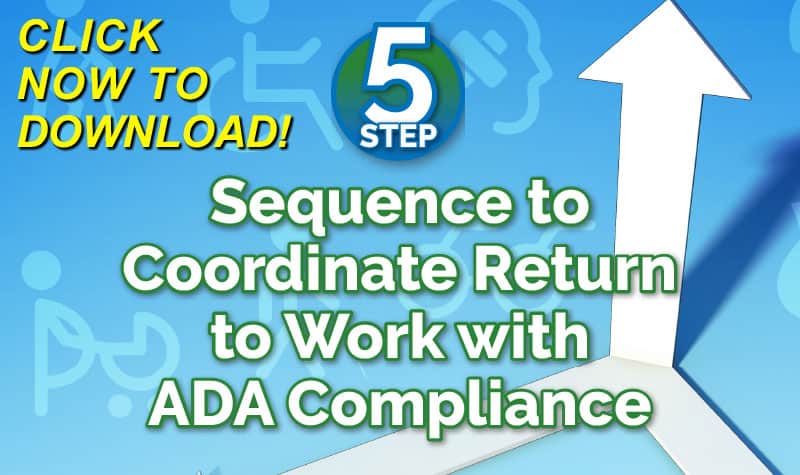The U.S. Equal Employment Opportunity Commission (EEOC) approved a Notice of Proposed Rulemaking (NPRM) revising its regulations to provide that an individual seeking protection under the Americans with Disabilities Act (ADA) establish the disability consistent with the original, expansive intent of Congress when it enacted the ADA in 1990. The NPRM, approved by 2-1 vote, carries a 60-day period for public comment.
The NPRM made several significant changes to the definition of the term “disability” necessitated by enactment of the ADA Amendments Act of 2008. The NPRM is posted on the Commission’s Web site, www.eeoc.gov, along with a question-and-answer guide about the proposal and instructions for submitting public comments.
“Today’s Commission action marks a key step in implementing the landmark Amendments Act, which will smooth the road for those trying to establish disability under the ADA,” said Acting EEOC Chairman Stuart Ishimaru. “The Commission acted following careful and thorough deliberations, and we look forward to reviewing any and all public comments before issuing our final regulation.”
The ADA Amendments Act, effective January 1, 2009, states Congress expects the EEOC to revise its regulations to conform to changes made by the Act, and expressly authorizes the EEOC to do so. The new law rejected the holdings in several Supreme Court decisions and portions of EEOC’s ADA regulations that Congress believed construed the definition of “disability” too narrowly, preventing individuals with impairments such as cancer, diabetes, epilepsy, multiple sclerosis, muscular dystrophy, post-traumatic stress disorder, and bipolar disorder from bringing discrimination claims.
The ADA Amendments Act (ADAAA) and the proposed rule make it easier for an individual alleging employment discrimination based on disability to establish that he or she meets the ADA’s definition of “disability.” The ADA Amendments Act also modifies the Rehabilitation Act of 1973, prohibiting employment discrimination in the federal workforce on the basis of disability. The EEOC voted June 17, 2008 to adopt the rules changes, which then went to the Office of Management and Budget for review, and to federal agencies.
Consistent with the ADAAA, the NPRM emphasizes:
1. the definition of disability — an impairment that poses a substantial limitation in a major life activity — must be construed in favor of broad coverage of individuals to the maximum extent permitted by the terms of the ADA, and should not require extensive analysis.
2. major life activities include “major bodily functions”
3. mitigating measures, such as medications and devices people use to reduce or eliminate the effects of an impairment, are not to be considered when determining whether someone has a disability
4. impairments, episodic or in remission, such as epilepsy, cancer, and many kinds of psychiatric impairments, are disabilities if they “substantially limit” major life activities when active.
The regulation also provides a more straightforward way of demonstrating a substantial limitation in the major life activity of working, and implements the ADAAA’s new standard for determining whether someone is “regarded as” having a disability. (workersxzcompxzkit)
The 60-day public comment period on the proposed rule-making will officially commence upon publication of the NPRM in the Federal Register, expected the week of September 21, 2009.
Author Robert Elliott, executive vice president, Amaxx Risks Solutions, Inc. has worked successfully for 20 years with many industries to reduce Workers’ Compensation costs, including airlines, health care, manufacturing, printing/publishing, pharmaceuticals, retail, hospitality and manufacturing. He can be contacted at: Robert_Elliott@ReduceYourWorkersComp.com or 860-786-8286.
We are accepting short articles* (200-600 words) on WC cost containment. Contact us at: Info@WorkersCompKit.com. *Non-compensable.
View the Entire Blog: https://blog.reduceyourworkerscomp.com/
©2009 Amaxx Risk Solutions, Inc. All rights reserved under International Copyright Law. If you would like permission to reprint this material, contact Info@WorkersCompKit.com
















